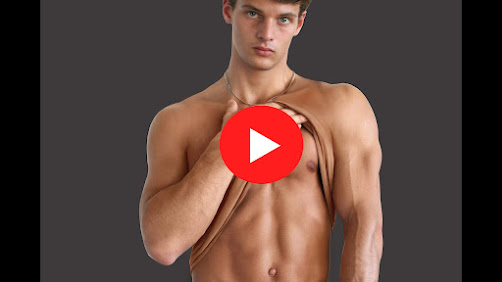What is body manipulation?
What is body manipulation?
Introduction
Body manipulation, often referred to as body modification, is a broad and fascinating aspect of human culture that has been practiced for centuries. It encompasses a wide range of practices, from temporary alterations like tattoos and piercings to more permanent changes like scarification and extreme bodybuilding. This article aims to delve into the world of body manipulation, examining its historical roots, cultural significance, and its evolving presence in contemporary society.I. Historical Roots of Body Manipulation
Ancient Practices
The history of body manipulation can be traced back to ancient civilizations. One of the earliest forms of body modification was the practice of tattooing. Archaeological evidence suggests that tattooing was practiced by the ancient Egyptians, with tattoos found on mummies dating back to around 2000 BC. Tattoos in ancient times were often symbols of status, spiritual significance, or cultural identity.
Cultural Significance
In various cultures throughout history, body manipulation held deep cultural significance. For example, the indigenous peoples of North America practiced body piercing and scarification as rites of passage and as a means of connecting with their spiritual beliefs. In Africa, scarification was used as a form of tribal identification, and elaborate body modifications were seen as a sign of beauty and strength.
Rituals and Spirituality
Body manipulation was also closely tied to spirituality and religious practices. In some cultures, individuals underwent extreme body modifications, such as body suspension rituals, to commune with the divine or as a test of their faith and endurance. These rituals often involved intense pain and suffering as a means of achieving a higher state of consciousness.
II. Modern Body Manipulation
Tattoo Culture
In the modern era, tattoos have become a widespread form of body manipulation. Tattooing has evolved into an art form, with skilled tattoo artists creating intricate designs that range from traditional tribal motifs to realistic portraits. Tattoos are now a form of self-expression, and people get inked to commemorate significant life events, express their individuality, or simply for aesthetic purposes.
Piercings
Body piercings, such as ear, nose, and navel piercings, have also gained popularity in recent years. These piercings are often seen as a form of self-adornment and can be easily removed or changed, allowing for a degree of flexibility in personal expression.
Extreme Bodybuilding
Extreme bodybuilding is another facet of modern body manipulation. While not considered a traditional form of body modification, bodybuilders engage in intense training regimens to sculpt their bodies and achieve extreme muscle development. This practice is driven by a desire for physical perfection and is often associated with competitive bodybuilding events.
Scarification and Branding
Scarification and branding, though less common than tattoos and piercings, are still practiced by those seeking more permanent body modifications. Scarification involves intentionally scarring the skin to create decorative patterns or designs, while branding involves using heated metal to burn the skin, leaving a permanent mark. These practices are often chosen by individuals looking for unique and highly personalized forms of body art.
III. Cultural Significance Today
Identity and Expression
In contemporary society, body manipulation remains an important means of self-expression and identity formation. Many individuals view their body modifications as a way to communicate their personal beliefs, values, and experiences. Tattoos, in particular, have become a form of storytelling, with each piece of ink representing a chapter in a person's life.
Subcultures and Communities
Body manipulation has given rise to various subcultures and communities. Tattoo conventions, body piercing studios, and body modification forums provide spaces for enthusiasts to connect and share their passion for these practices. These communities offer support and camaraderie for those who may have faced societal stigma or judgment for their body modifications.
IV. Controversies and Ethical Considerations
Cultural Appropriation
One of the ongoing controversies surrounding body manipulation is cultural appropriation. Some individuals from non-indigenous backgrounds have adopted traditional practices like tribal tattoos and piercings without an understanding of their cultural significance. This has led to criticism and calls for greater cultural sensitivity and respect.
Health and Safety
The safety of body manipulation practices is another important consideration. When not performed by trained professionals in sterile environments, these practices can carry health risks, including infections and complications. Regulations and guidelines exist in many countries to ensure the safety of individuals seeking body modifications.
Body Dysmorphic Disorder
Extreme body modification, such as extensive tattooing or bodybuilding, can sometimes be associated with body dysmorphic disorder (BDD). BDD is a mental health condition characterized by an obsessive focus on perceived flaws or imperfections in one's appearance, leading individuals to seek extreme measures to alter their bodies. It is essential to recognize and address mental health concerns related to body manipulation practices.
Conclusion
Body manipulation, with its rich historical roots and evolving significance in contemporary society, continues to be a complex and multifaceted aspect of human culture. From ancient tribal rituals to modern forms of self-expression, body manipulation reflects our desire to shape and define our bodies in ways that are deeply meaningful to us. While it is essential to acknowledge the controversies and ethical considerations surrounding these practices, body manipulation remains an enduring and evolving facet of human identity and artistry. As our understanding of cultural sensitivity, safety, and mental health continues to evolve, so too will our appreciation of the diverse world of body manipulation.


I appreciate the depth of research you put into your posts.
ReplyDeleteVisit Here: Photo Color Correction Service